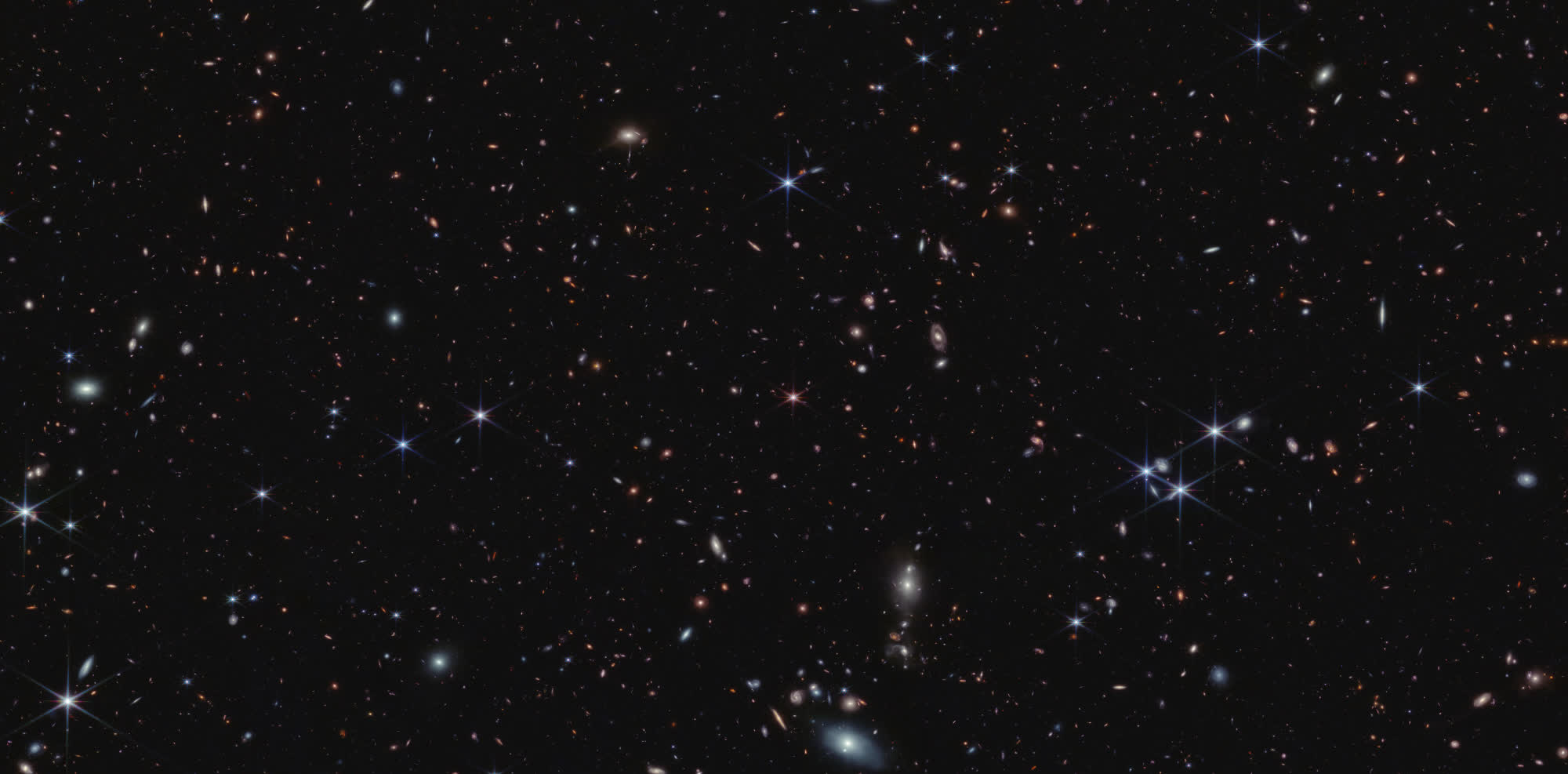The big picture: Astronomers have observed something unusual in the data gathered by the Hubble Space Telescope: the universe seems to be expanding faster today than it was billions of years ago, shortly after the Big Bang. This discrepancy, known as the “Hubble tension,” has become a perplexing challenge for scientists.
Now, to the dismay of researchers, a new study designed to double-check the calculated rate of the universe’s expansion – aiming to determine whether or not the initial readings were flawed – has confirmed that the measurements are indeed accurate.
This time, scientists analyzed new data from the James Webb Space Telescope, which aligns perfectly with Hubble’s findings regarding the expansion rate discrepancy. Published in The Astrophysical Journal, the study used observations of distant galaxies and supernovae to independently calculate the modern universe’s expansion rate using three separate methods.
Like Hubble, Webb’s data points to an expansion rate of approximately 73 kilometers per second per megaparsec. For reference, a megaparsec spans over three million light-years – a truly staggering distance.
In contrast, theoretical models based on the cosmic microwave background predict an expansion rate closer to 67 – 68 km/s/megaparsec. While the roughly five km/s difference may seem small, it is alarmingly large and statistically significant in the field of cosmology.

“The discrepancy suggests our understanding of the universe may be incomplete,” said Nobel laureate Adam Riess, who led the new research. “With two NASA flagship telescopes now confirming each other’s findings, we must take this problem very seriously.”
According to the standard model, this discrepancy could be attributed to a mysterious force called “dark energy,” which comprises roughly 70 percent of the universe and is believed to drive its accelerating expansion. However, dark energy remains one of the greatest unsolved mysteries in physics, meaning that unraveling this phenomenon will be no easy feat.
The new Webb data has achieved remarkable precision in measuring the expansion rate, with uncertainties of less than two percent. This level of accuracy makes it highly unlikely that both of humanity’s premier space telescopes – Hubble and Webb – have been making identical errors for over a decade. Instead, these findings suggest the potential for groundbreaking discoveries about the fundamental physics shaping our universe.
“One possible explanation for the Hubble tension would be if there was something missing in our understanding of the early universe, such as a new component of matter – early dark energy – that gave the universe an unexpected kick after the big bang,” suggests Johns Hopkins theorist Marc Kamionkowski.
Other hypotheses include exotic particles, shifting fundamental constants, primordial magnetic fields, or even a revised understanding of dark matter.
While the Hubble tension may not directly affect life on Earth, it is a vital puzzle for scientists seeking to map the universe’s evolution and determine its ultimate fate. Thankfully, teams of researchers and our flagship space telescopes are actively working to uncover answers.









Leave a Comment